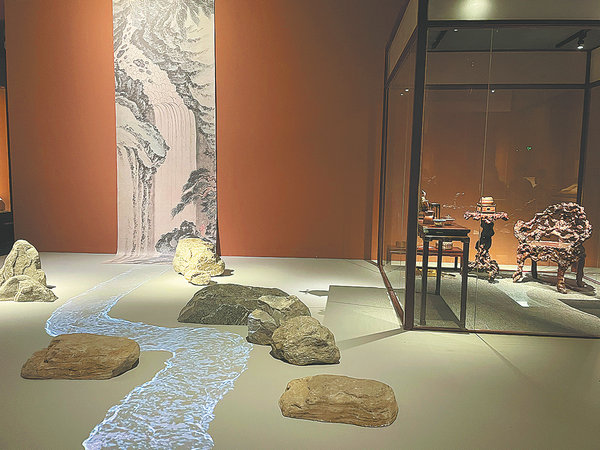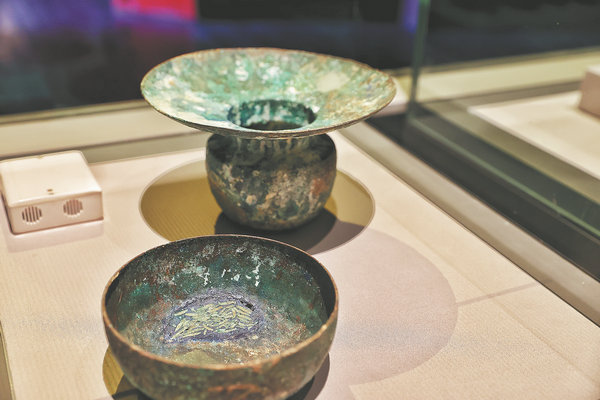

Many paintings, documents and utensils depict the tea cultures of other ethnic groups in times gone by. It's interesting that no matter which group people belonged to, tea culture and the way of drinking tea eventually became almost the same, adds Shan.
"From the perspective of tea culture, we can see that the development of Chinese culture is diverse and integrated," she adds.
In the Tea Roads Extending to the World section, many tea-related items, sent as gifts from other countries to the imperial family in the Forbidden City, are on display. Tea sets from Britain, Japan and Russia show how tea culture spread to other parts of the world, and how people elsewhere drank tea.
"Some enamel tea pots have Chinese figures or elements painted on them. Meanwhile, items from the West were widely used during tea ceremonies in the Forbidden City. It was a form of mutual exchange and cultural communication," says Wang.
Apart from the utensils and paintings, visitors can also smell, touch and enjoy tea.
Dozens of tea bricks of various sizes and shapes made in different places and sent by officials to the imperial family during the Qing Dynasty are also on display, and the aroma of tea fills the exhibition hall's air. Visitors can sit in a modern teahouse, examine different varieties of leaves and finally, have a cup.
"We want our audience to fully immerse themselves in the show by setting up interaction spaces," says Wang.
